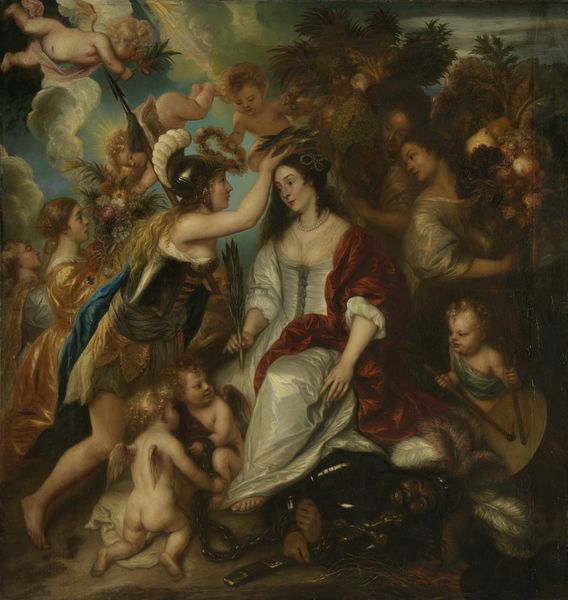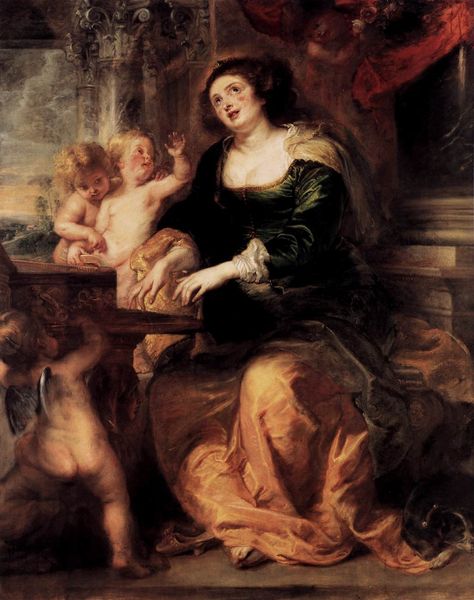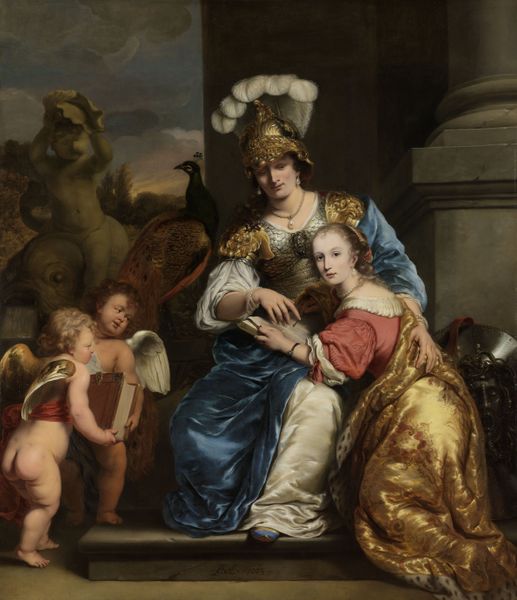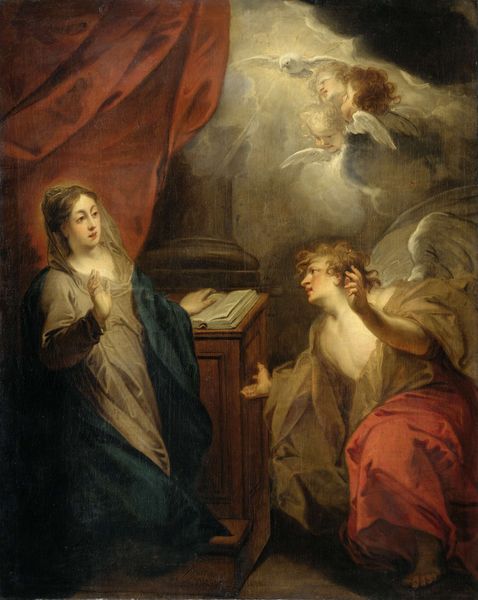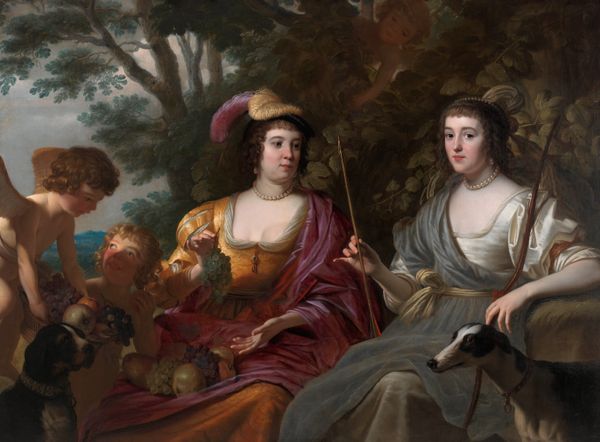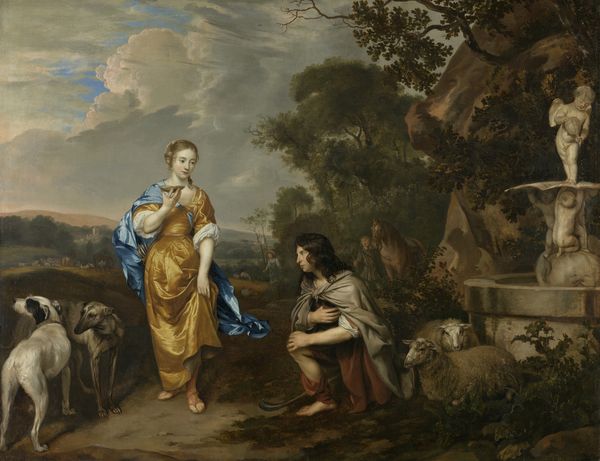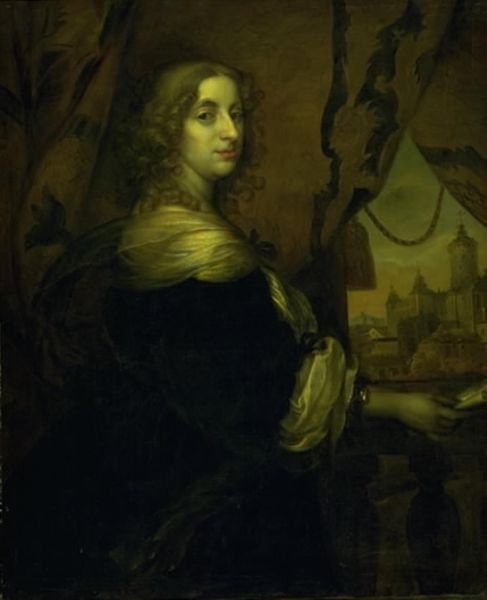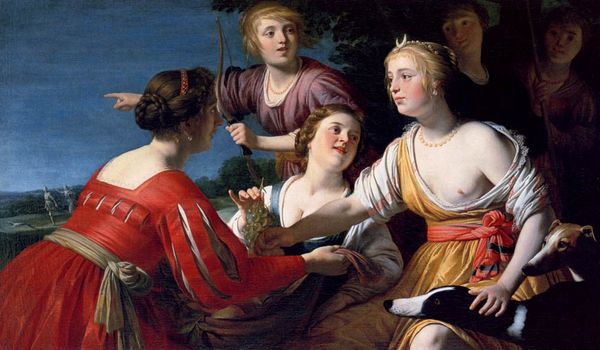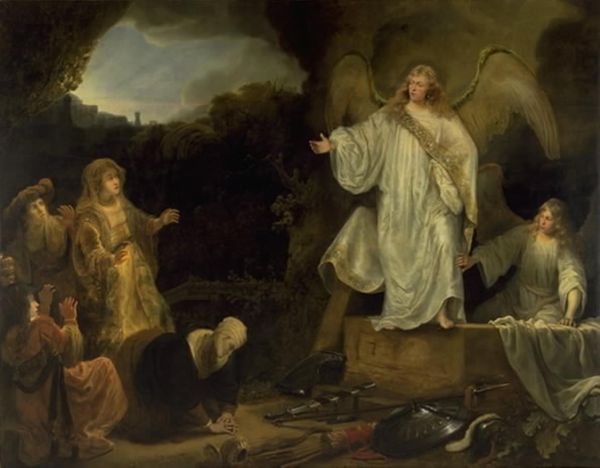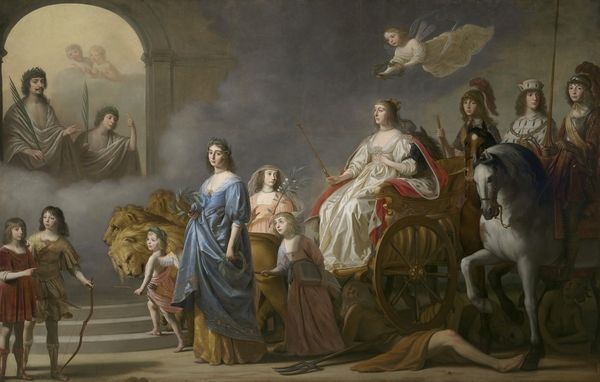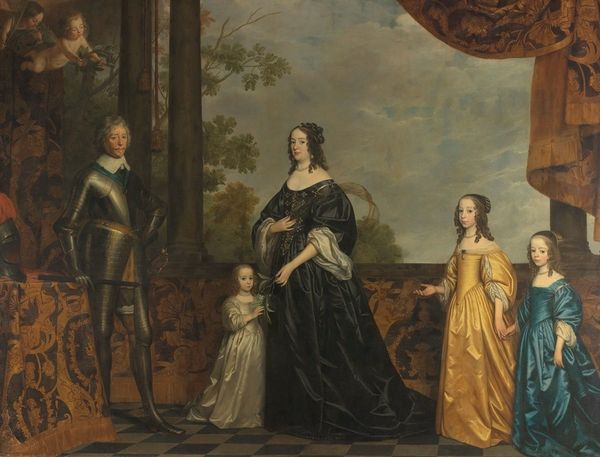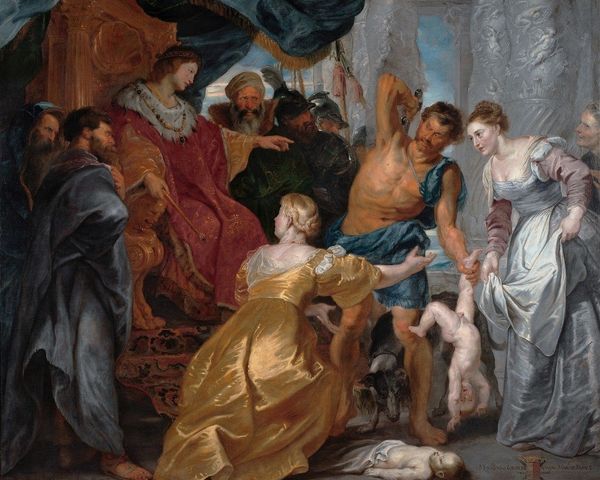
Allegory on the Memory of Frederik Hendrik (1584-1647), Prince of Orange, with the Portrait of his Widow Amalia van Solms 1654
0:00
0:00
painting, oil-paint
#
portrait
#
allegory
#
baroque
#
dutch-golden-age
#
painting
#
oil-paint
#
oil painting
#
group-portraits
#
history-painting
Dimensions: support height 307 cm, support width 189 cm
Copyright: Rijks Museum: Open Domain
Curator: Ah, it exudes such serene gravitas. The artist clearly sought to memorialize grief through the visual language of power. Editor: You know, the longer I look, the less serene it feels. It’s almost…theatrical. All that gesturing from the allegorical figures makes it look staged, wouldn't you agree? Like a political advert written in paint. Curator: Well, let’s give some context, shall we? This piece, "Allegory on the Memory of Frederik Hendrik with the Portrait of his Widow Amalia van Solms" was crafted in 1654 by Govert Flinck. What’s fascinating here is not only the symbolic representation of grief but also how it intersects with the Dutch Golden Age’s demand for grand history painting serving political functions. Consider the very materiality of oil on canvas—its accessibility compared to earlier fresco techniques allowed for a wider patronage, a growing art market responsive to socio-political currents... Editor: So it's oil paint and canvas making that feeling of it being "staged," but in a good way. The textures alone, that velvety black fabric around Amalia, feels rich and solid—a sign of material success for all to see in this Dutch context. It definitely sets a somber mood but in a kind of…expensive way. What's really captivating for me is the light falling on the face, almost giving it this unearthly glow in comparison to everything else. Curator: Exactly! It's drawing our eye towards her grief but also her authority. And yes, those fabric folds are definitely deliberate. We have to remember the context: materials became potent symbols during this period, emblems of class and global trade dominance—linking Dutch material culture directly with overseas exploits and resources—I'd suggest the piece functions on both an allegorical and deeply material register. Editor: Well, for me, I am taken by those ghostly figures hovering up above, and also wonder, perhaps with my eyes, or mind, where they will carry the scales off to. It might sound ridiculous, but somehow that gives me chills. That artist knows how to set the mood! I think this work plays into a very elemental response. Curator: Flinck creates an undeniably powerful emotional landscape by meticulously layering the material world with ethereal allegories. Its production context really does underpin its cultural authority. Editor: And that convergence, the seen with unseen, or history and power makes the painting shimmer. It gives a lasting power over one, indeed.
Comments
No comments
Be the first to comment and join the conversation on the ultimate creative platform.
